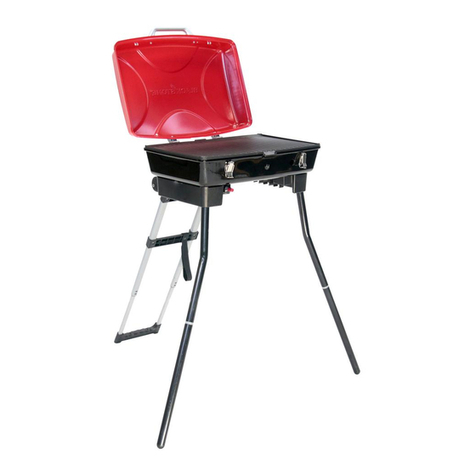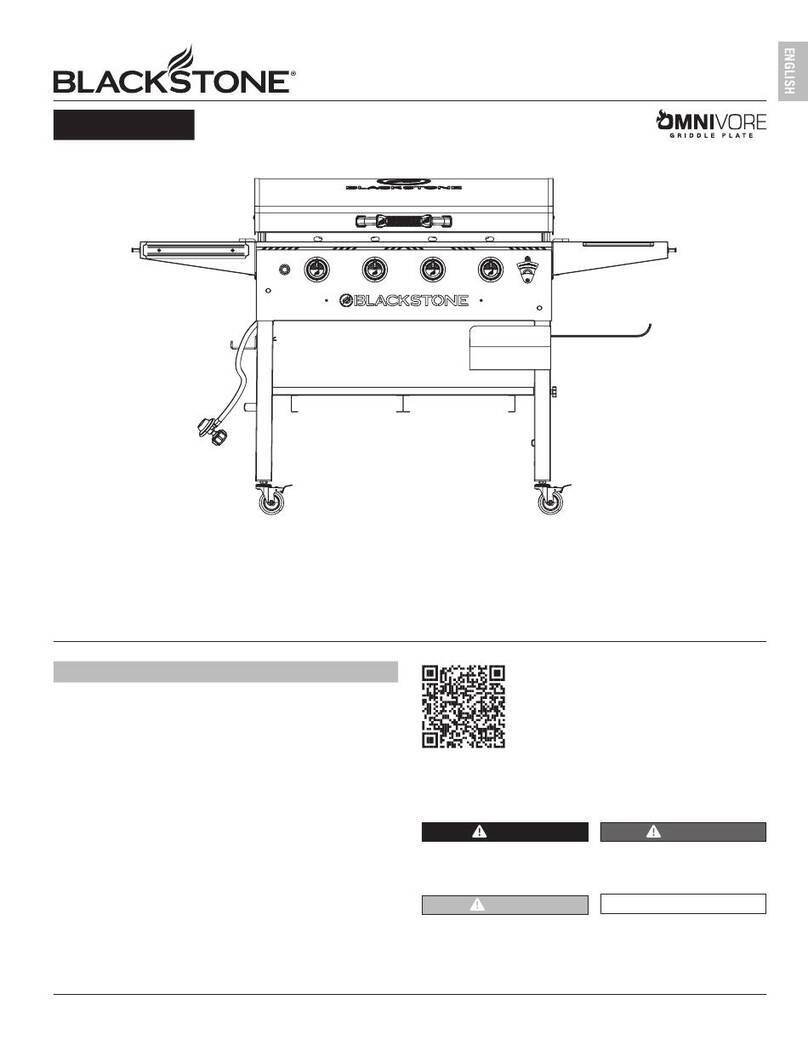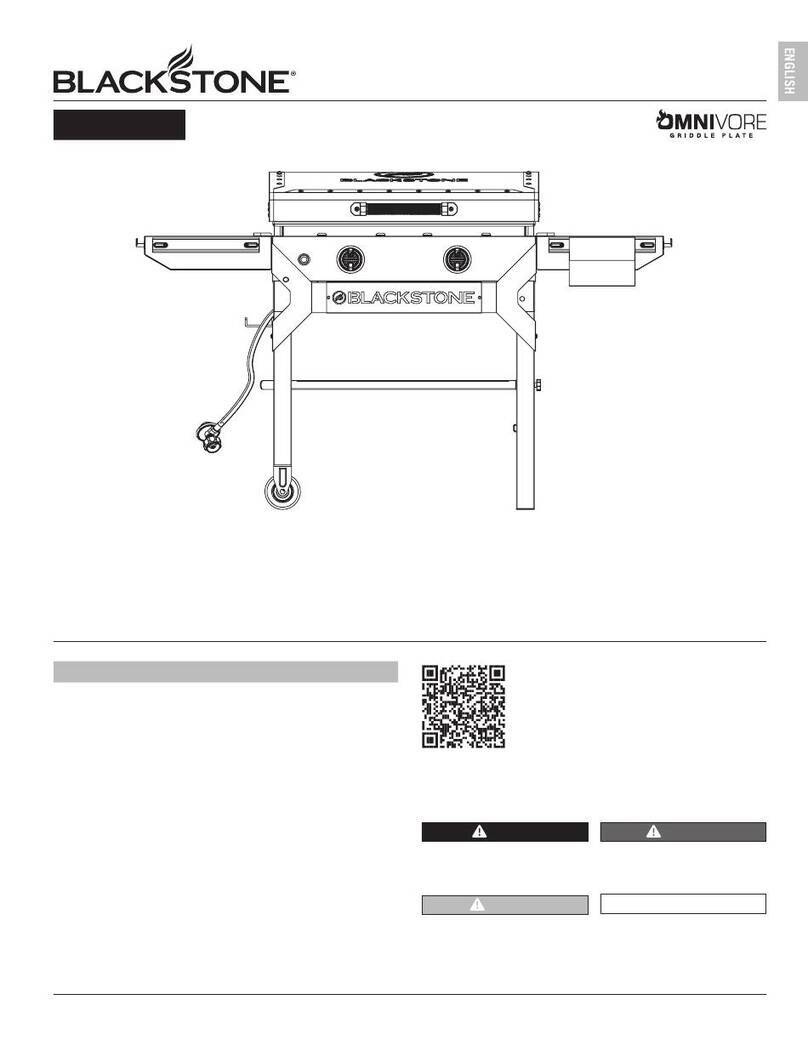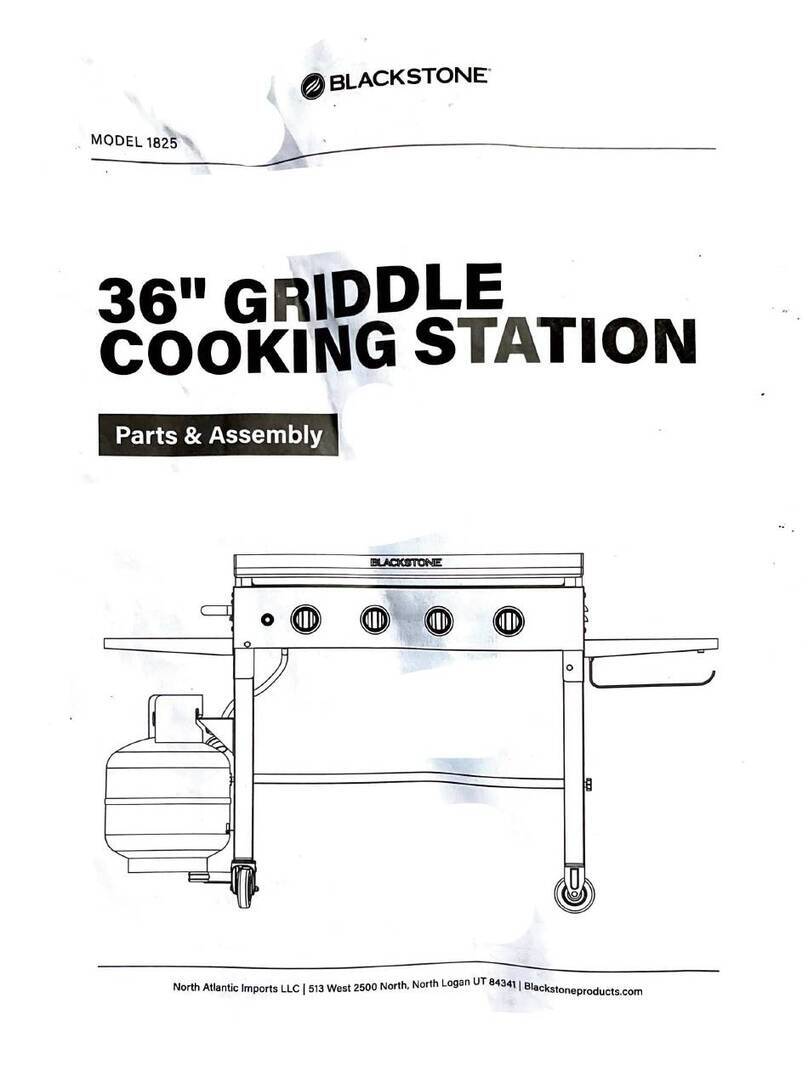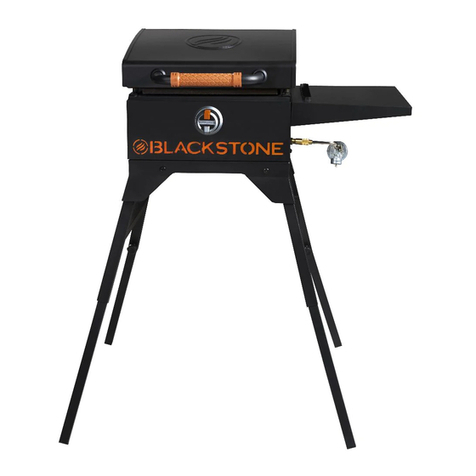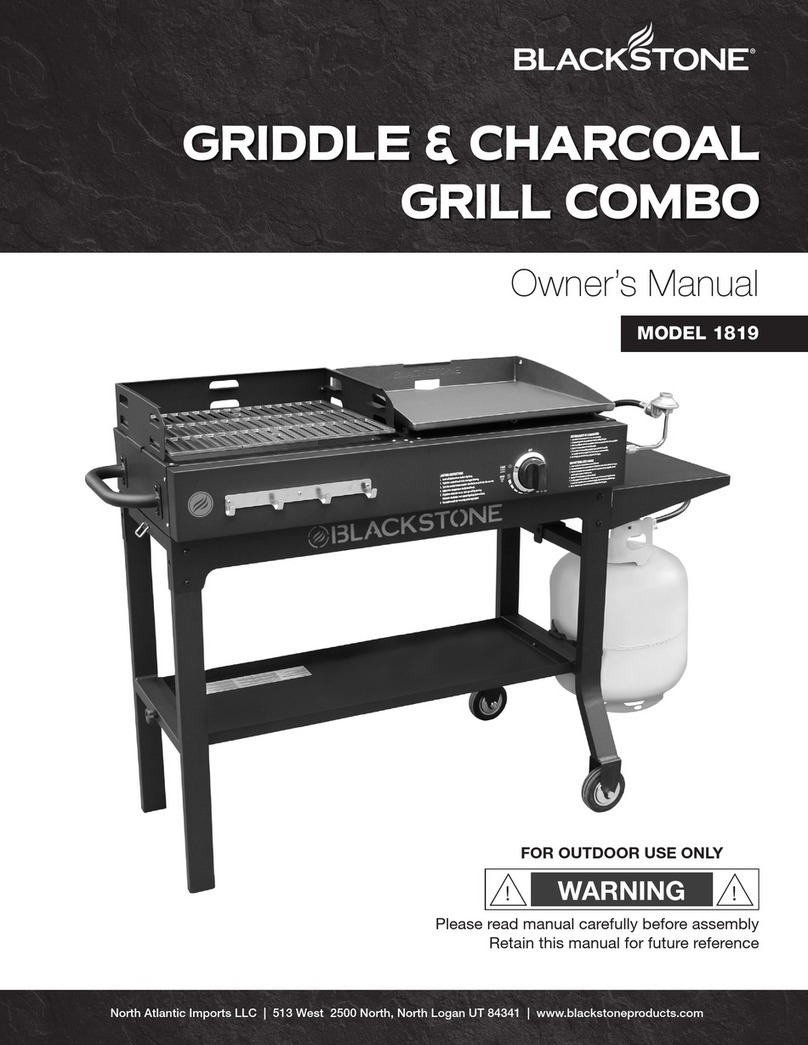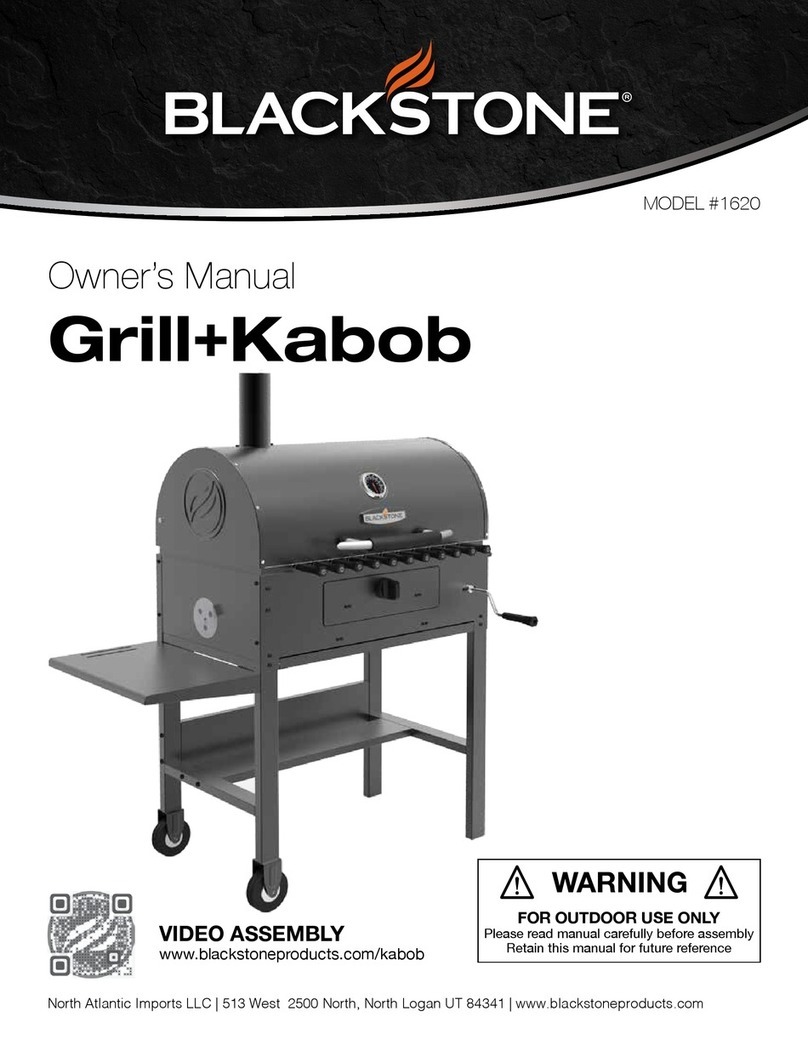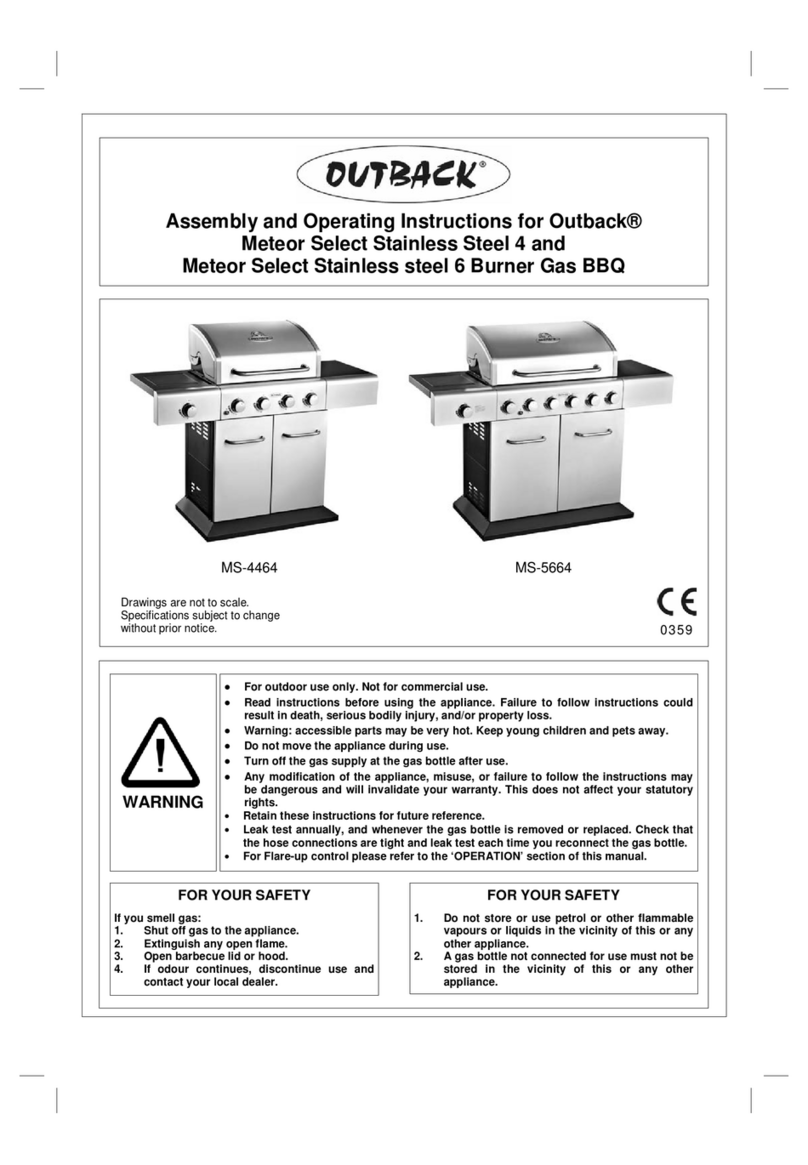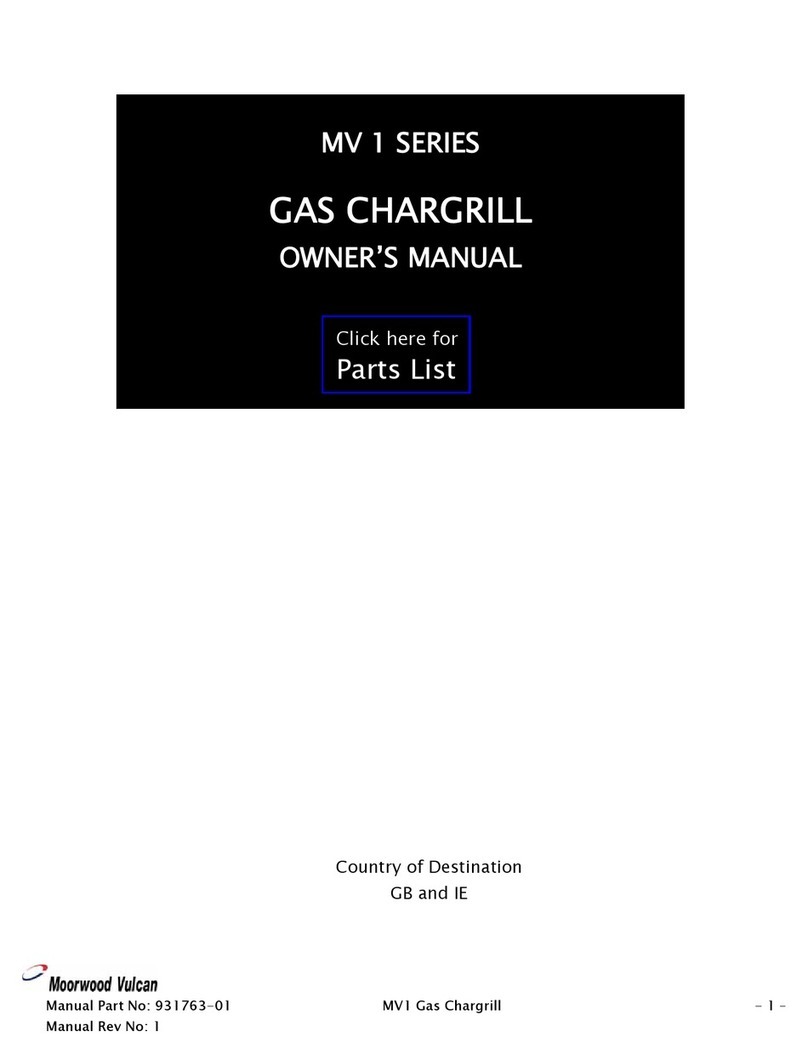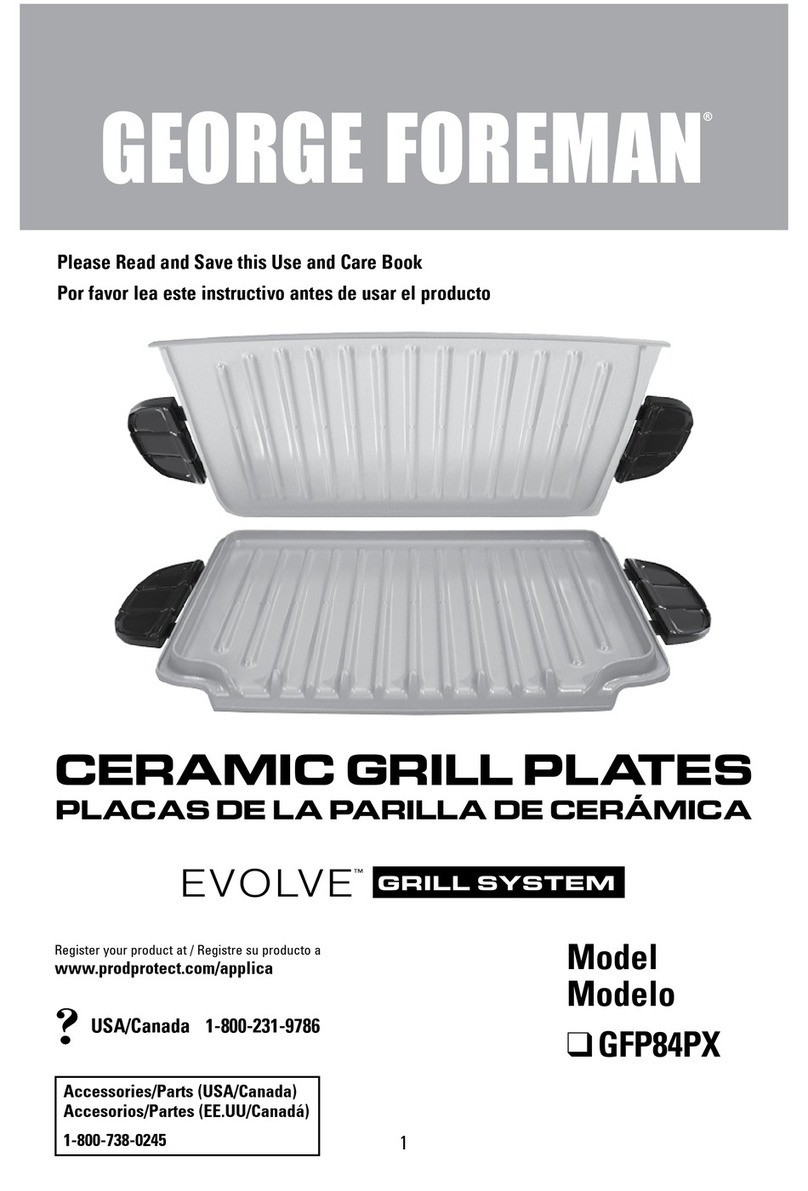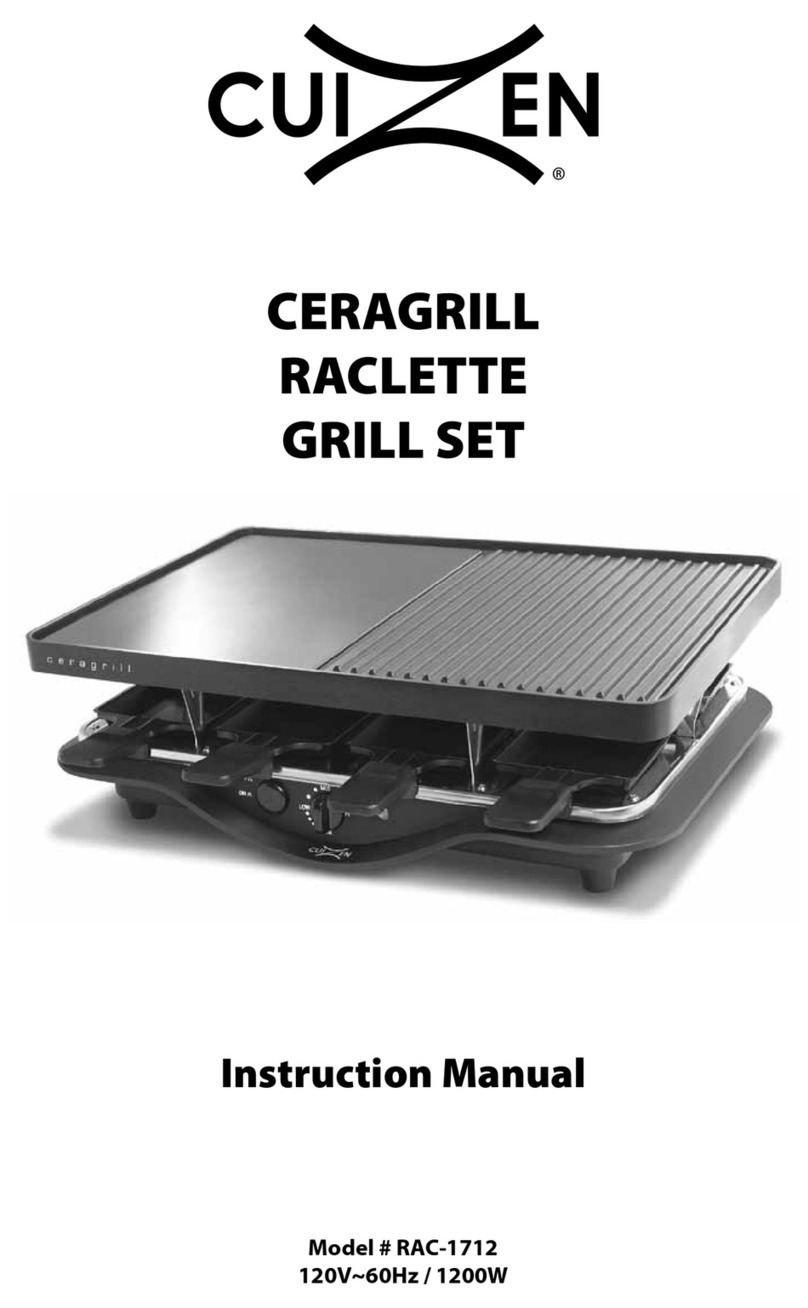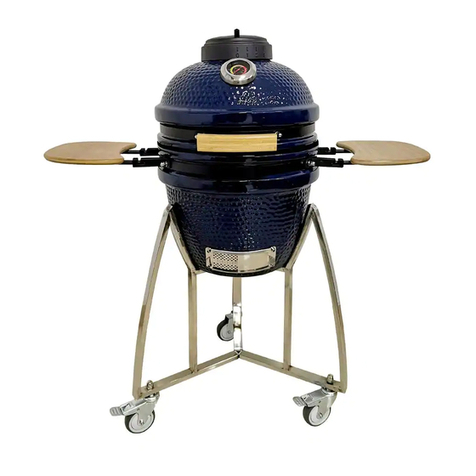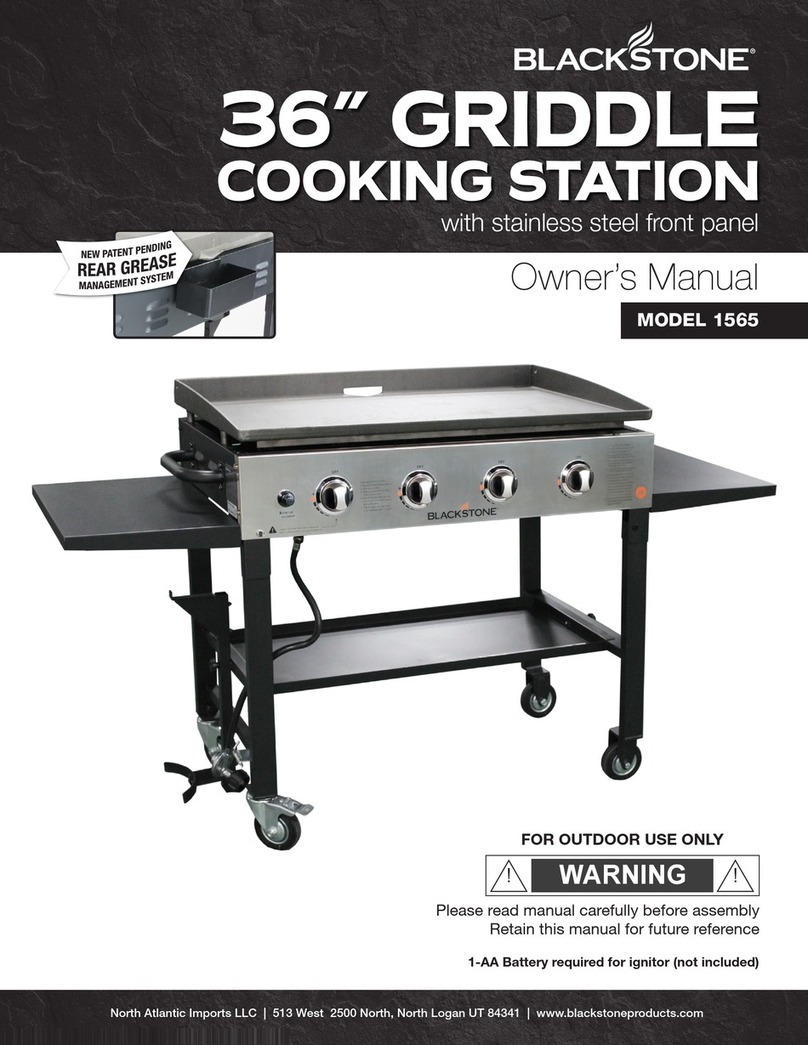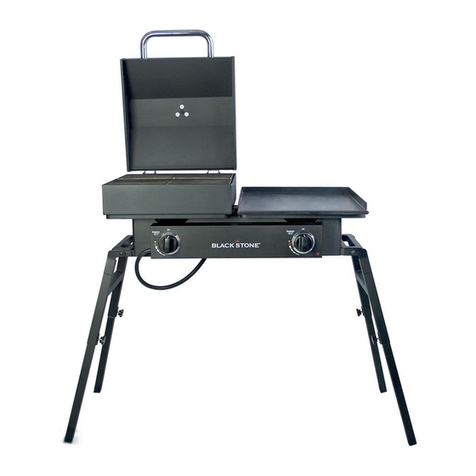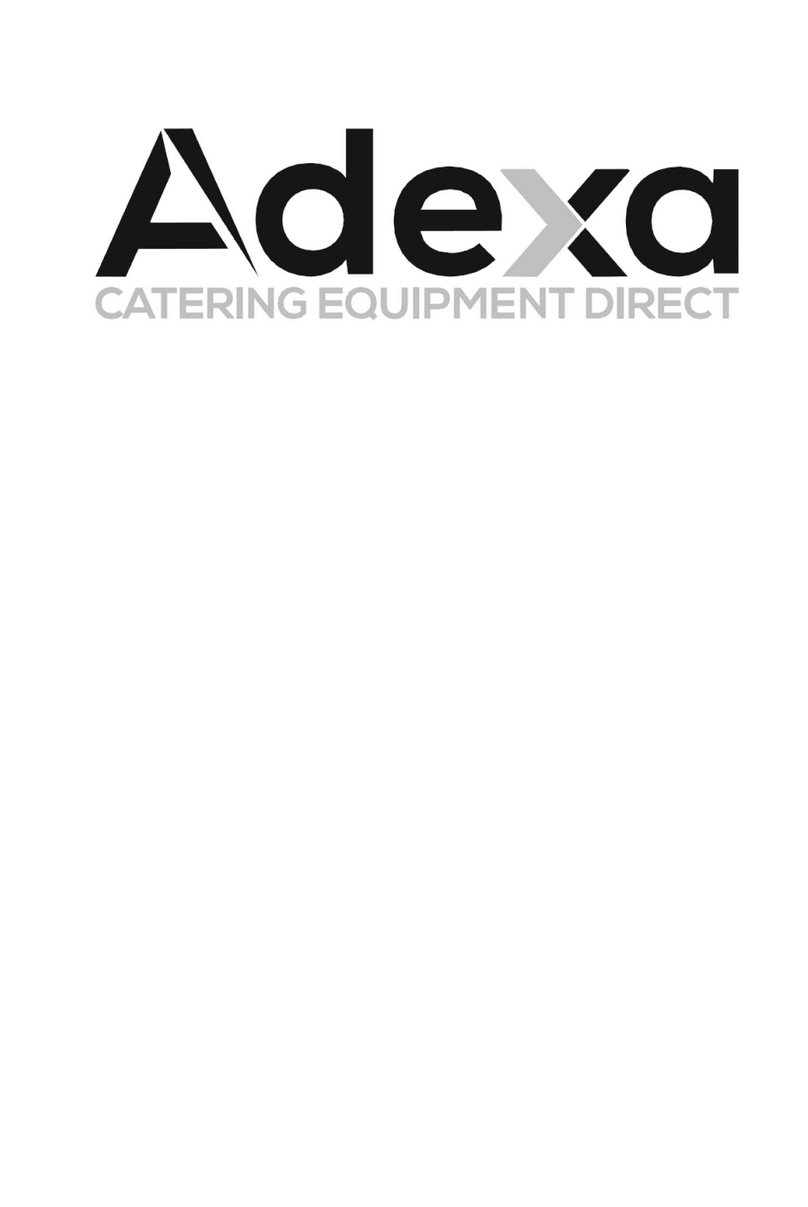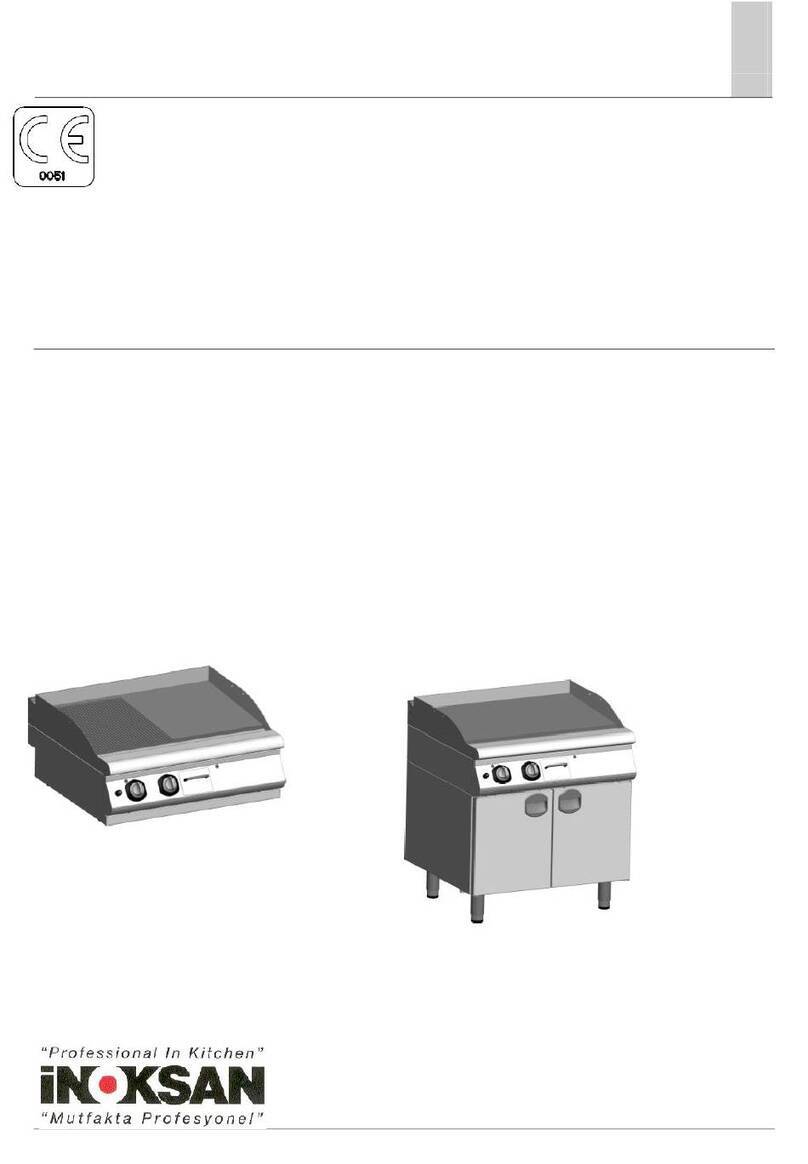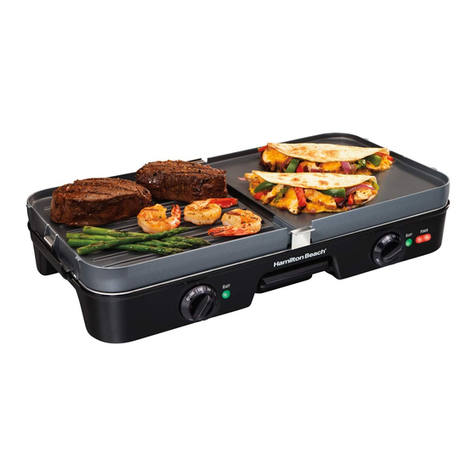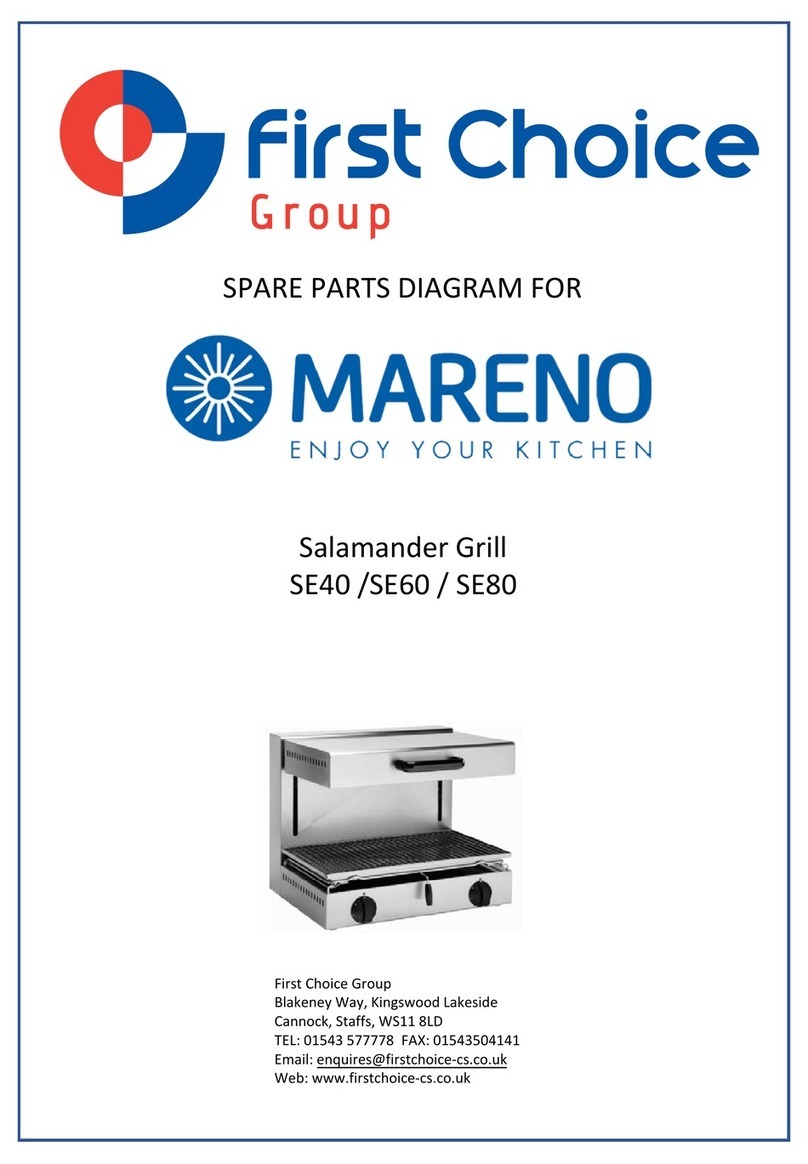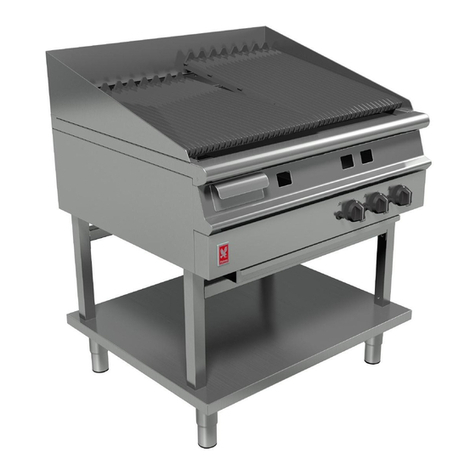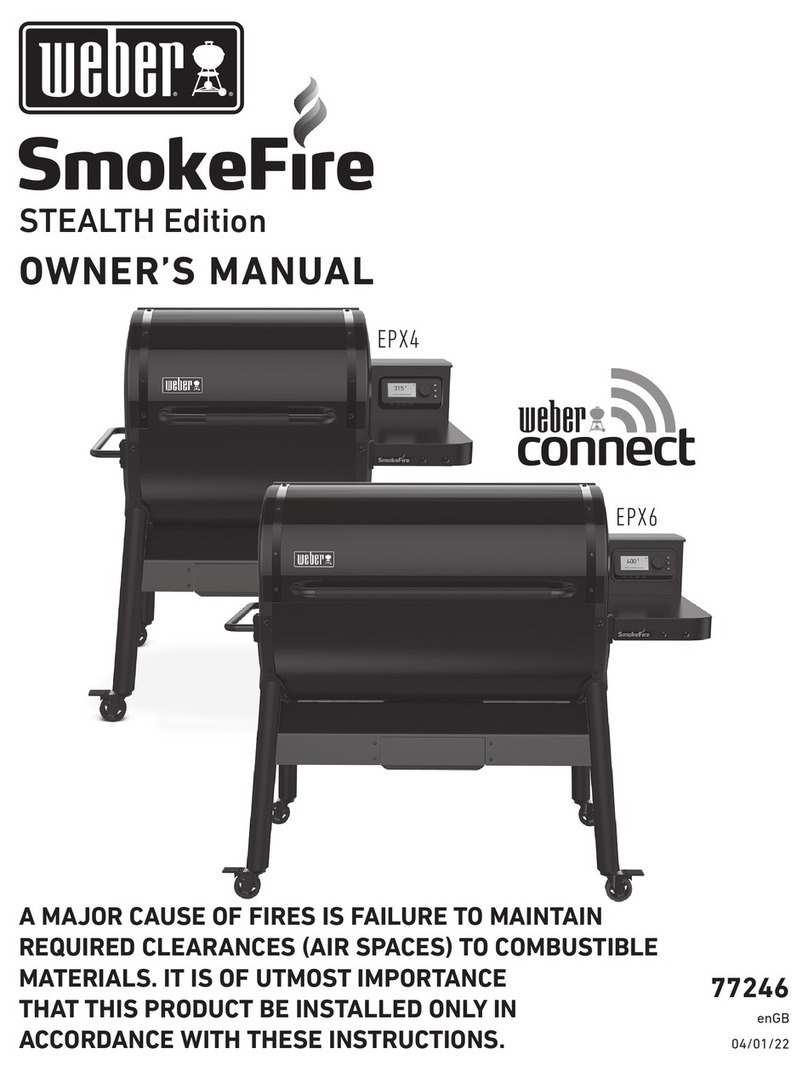
11
Storing Your Griddle
• Store in dry location.
• When an LP cylinder is connected to griddle,
store outdoors in a well-ventilated space and out
of reach of children.
• Cover griddle if stored outdoors. Choose
from a variety of griddle covers offered
by manufacturers.
• Store grill indoors ONLY if LP cylinder is turned
off and disconnected, removed from griddle and
stored outdoors.
• When removing griddle from storage, follow
“Cleaning the Burner Assembly” instructions be-
fore starting griddle.
Cleaning the Burner Assembly
Follow these instructions to clean and/or replace
parts of burner assembly or if you have trouble
igniting griddle.
1. Turn gas OFF at control knobs and LP cylinder.
2. Remove carryover tubes and burners.
3. Detach electrode from burner.
NOTE: Removal/Detachment method will
depend on the burner conguration.
4. Carefully lift each burner up and away from
valve openings. We suggest three ways to
clean the burner tubes. Use the one easiest for
you. (A) Bend a stiff wire (a light weight coat
hanger works well) into a small hook. Run the
hook through each burner tube several times.
(B) Use a narrow bottle brush with a exible
handle (do not use a brass wire brush), run the
brush through each burner tube several times.
(C) Wear eye protection: Use an air hose to
force air into the burner tube and out the burner
ports. Check each port to make sure air comes
out each hole.
5. Wire brush entire outer surface of burner to
remove food residue and dirt.
6. Clean any blocked ports with a stiff wire such as
an open paper clip.
7. Check burner for damage, due to normal wear
and corrosion some holes may become en-
larged. If any large cracks or holes are found
replace burner.
VERY IMPORTANT: Burner tubes must
reengage valve openings.
8. Attach electrode to burner.
9. Carefully replace burners.
10. Attach burners to brackets on rebox.
11. Reposition carryover tubes and attach to burners.
Food Safety
Food safety is a very important part of enjoying the
outdoor cooking experience. To keep food safe from
harmful bacteria, follow these four basic steps:
Clean: Wash hands, utensils, and surfaces with hot
soapy water before and after handling raw meat
and poultry.
Separate: Separate raw meats and poultry from
ready-to eat foods to avoid cross contamination.
Use a clean platter and utensils when removing
cooked foods.
Cook: Cook meat and poultry thoroughly to kill
bacteria. Use a thermometer to ensure proper
internal food temperatures.
Chill: Refrigerate prepared foods and leftovers
promptly. For more information Visit the Canadian
partnership for Consumer Food Safety Education-
www.befood safe.ca.
How To Tell If Meat Is Grilled Thoroughly
• Meat and poultry cooked on a griddle often
browns very fast on the outside. Use a meat
thermometer to be sure food has reached a safe
internal temperature, and cut into food to check
for visual signs of being done.
• Whole poultry should reach 165°F/74°C. Juices
should run clear and esh should not be pink.
• Hamburgers made of any ground meat or
poultry should reach 160°F/71°C , and be
brown in the middle with no pink juices. Beef,
veal and lamb steaks, roasts and chops can be
cooked to 145°F/63°C . All cuts of pork should
reach 160°F/71°C.
• NEVER partially grill meat or poultry and nish
cooking later. Cook food completely to destroy
harmful bacteria.
• When reheating takeout foods or fully cooked
meats like hot dogs, grill to 165°F/74°C, or until
steaming hot dogs, grill to 165°F/74°C, or until
steaming hot.




















